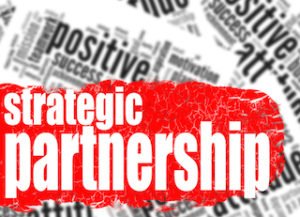Salespeople hate objections. Everyone does, but salespeople hear them more often than most. (When you ask people to part with their money all day long, you’re bound to hear “no” frequently.)
And because rejection hurts – and yes, objections are a type of rejection – it’s only human to try to avoid it. Salespeople do this by talking too much. By beating around the bush when asking for the sale. By clinging to tricks, silver bullets, and cheesy scripts. By hiding behind justifications like, “I don’t want to seem too pushy.”
Avoiding objections is stupid. What you need to do is get the truth on the table – early and often.
Here is the brutal truth. When you choose delusion over reality, you are making a conscious choice not only to lie to yourself but to lower your standards and performance. In sales, you cannot be delusional and successful at the same time.
There are many reasons to encourage your stakeholder to reveal their objections, difficult questions, issues, concerns, and worries early in the process. For one thing, it lets you start minimizing their concerns right away. Your openness builds trust and deepens the relationship. And if there really is no opportunity for a sale, it allows you to move on quickly. Far better to know now than after you’ve invested days, weeks, or even months in a deal that’s destined to fail.
Here are a few tips, culled from my new book, Objections: The Ultimate Guide for Mastering the Art and Science of Getting Past No (Wiley, June 2018, ISBN: 978-1-119-47738-9), for getting objections out in the open:
- Never ask, “Are you the decision maker?” Instead, use indirect questions to determine the answer. One of the most difficult objections to deal with sounds like this: “Thank you for your presentation. I really like what you brought to the table, but I’m going to need to review this with my boss (or the committee, my husband, wife, friend, peers, etc.) before we can make a decision.” This objection usually happens because the stakeholder either says outright or insinuates that he or she is the final decision maker. Believing this to be true, the salesperson advances through the sales process only to be blindsided at the end.
Instead of asking, “Are you the decision maker?” use indirect questions such as:
- Can you tell me about your buying policies?
- How did you make the decision on this service the last time you signed a contract?
- If you give us the green light, what happens next?
- Apart from yourself, who else is involved in this decision?
- Whose advice do you value or rely upon when making decisions like this?
Indirect questions work because they trigger your stakeholders to tell a story and reduce their temptation to take the leading role. Most importantly, you avoid putting them and their ego on the spot, and this gives you a higher probability of getting a straight answer. That way you know exactly where you stand before getting too deeply into the sales process.
- Map your stakeholders. One of the big mistakes salespeople make is being one-dimensional in deals. They connect with one stakeholder only. The failure to identify, qualify, map, and engage other people in the account leaves them open to unknown objections that can and will stall or kill the deal. Taking the time to map the account stakeholders and get in front of them is the most effective way to find hidden objections and bring them to the surface early.
In most deals, there are five stakeholders you meet: Buyers, Amplifiers, Seekers, Influencers, and Coaches. You can remember them with the acronym BASIC. While the buyers are the real decision makers, the others play various supporting roles and can often advocate for you. Just avoid giving too much credence to the seekers, who have little authority or influence yet often pretend they do, Blount says. Legions of salespeople go for this ruse hook, line, and sinker and get stuck with seekers.
Tools like ZoomInfo, DiscoverOrg, and LinkedIn have made the stakeholder mapping process infinitely easier. Beginning with early-stage prospecting and information gathering, through qualifying and into discovery, you should be identifying and mapping BASIC. When identifying stakeholders and their potential objections, you must leave nothing to chance.
- Activate the self-disclosure loop. Stakeholders tend to reveal only a small portion of the total mass, most of which is hidden below the surface. Until you penetrate their façade, you have no way of knowing their objections or if you are addressing their most important and emotional issues. One of my favorite techniques for pulling the veil from objections is activating the human self-disclosure loop, which compels other people to reveal their cards.
Harvard researchers Dr. Jason Mitchell and Dr. Diana Tamir discovered that humans get a neurochemical buzz from self-disclosure.1 In their study,2 subjects were given the opportunity to talk or brag about themselves while their brain activity was being observed. As the subjects began talking about themselves, the area of the brain associated with pleasurable feeling and reward became activated. Each time the subject would self-disclose, this area of the brain would light up like a Christmas tree. The subjects were getting a shot of dopamine (Blount calls this brain crack) for revealing something about themselves. And, thus, a loop was formed.
Staying out of the way and allowing your stakeholders to talk can activate this reward loop inside their brains and cause them to spill the beans. Essentially, you begin with open-ended questions that get your stakeholder talking and you don’t interrupt. Then, you listen deeply and center your follow-up questions on these self-disclosures.
- Practice deep listening. To truly hear another person, you must listen with all your senses – eyes, ears, and intuition. This is critically important for getting past smoke screens and uncovering the real objection. As you listen, observe the other person’s body language and facial expressions. Pay attention to the tone, timbre, and pace of the stakeholder’s voice. Focus on the meanings behind the words they are using. Be alert for emotional cues, verbal and nonverbal.
When the stakeholder expresses emotion through facial expressions, body language, tone, or words, you gain insight into what is important to them. As you perceive emotional importance, ask follow-up questions to test your hunch that an objection exists and get all the information on the table. For example:
- Sounds like you experienced this problem with a past vendor. I’m curious about what happened?
- You seem a little worried about ____. What are you thinking?
- What has you worried the most about doing business with us?
- That seems like a big concern to you?
When you perceive that an issue exists, don’t shy away – ask about it. Quite often your intuition will be right, and you’ll save yourself a ton of heartache by dealing with the issue early – before it becomes an insurmountable roadblock that derails and kills your deal.
It makes no sense to fear objections. They are simply part of the decision-making process, and we have every reason to deal with them quickly so we can move on to the next stage.
Putting off the objection for as long as possible may seem better in the moment than dealing with the emotional pain that comes with it,” he says. “But few things suck more than investing everything you have into an opportunity and getting hammered by a last-minute objection from a stakeholder you overlooked in discovery. Time is money, and yours is your most valuable asset. Don’t invest it in a deal that’s not going to close.
 About Jeb Blount:
Jeb Blount is the author of nine books and is among the world’s most respected thought leaders on sales, leadership, and customer experience. As a sales acceleration specialist, he helps sales organizations reach peak performance fast by optimizing talent, leveraging training to cultivate a high-performance culture, developing leadership and coaching skills, and applying more effective organizational design. Through his global training organization, Sales Gravy, Jeb advises many of the world’s leading organizations and their executives on the impact of emotional intelligence and interpersonal skills on customer-facing activities and delivers training to thousands of participants in both public and private forums. His flagship website, SalesGravy.com, is the most visited sales-specific website on the planet. For more information about the book, visit the book’s page on www.wiley.com.
About Jeb Blount:
Jeb Blount is the author of nine books and is among the world’s most respected thought leaders on sales, leadership, and customer experience. As a sales acceleration specialist, he helps sales organizations reach peak performance fast by optimizing talent, leveraging training to cultivate a high-performance culture, developing leadership and coaching skills, and applying more effective organizational design. Through his global training organization, Sales Gravy, Jeb advises many of the world’s leading organizations and their executives on the impact of emotional intelligence and interpersonal skills on customer-facing activities and delivers training to thousands of participants in both public and private forums. His flagship website, SalesGravy.com, is the most visited sales-specific website on the planet. For more information about the book, visit the book’s page on www.wiley.com.
- Belinda Luscombe, “Why We Talk About Ourselves: The Brain Likes It,” Time, May 8, 2012. http://healthland.time.com/2012/05/08/why-we-overshare-the-brain-likes-it/.
- Diana I. Tamir and Jason P. Mitchell, “Disclosing Information About the Self Is Intrinsically Rewarding,” Proceedings of the National Academy of Sciences, 109, no. 21 (2012): 8038–43. http://www.pnas.org/content/109/21/8038.full.













